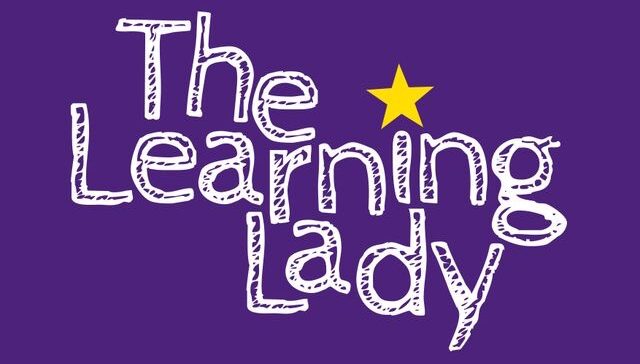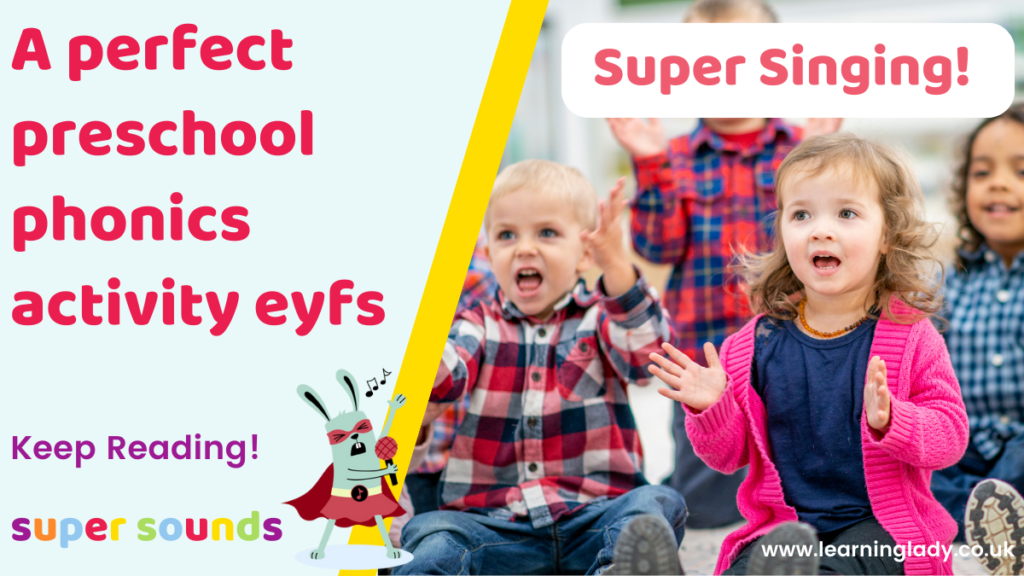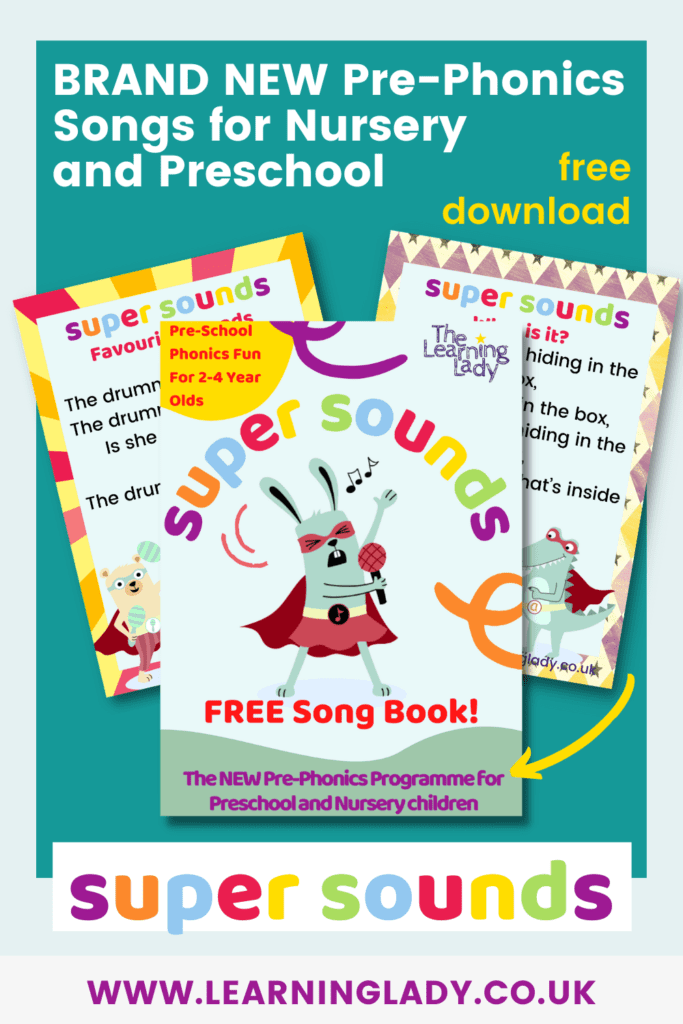Alfie needed singing in his life!
When Alfie joined our nursery he struggled. He knew very few words, and the words he did say were unclear.
Alfie found it hard to communicate with everybody, especially his peers. He was frustrated because the whole social environment was overwhelming .

For Alfie, and many of his friends, singing became a critical phonics activity eyfs essential. This is the story of how our simple daily singing sessions helped Alfie on his road to school readiness.
Why singing is a critical part of phonics for 3 year olds
Whenever EYFS children are singing, they’re effectively giving their mouth muscles a workout!
Just like doing reps at the gym, the repetition of singing songs builds mouth muscle strength for articulating speech sounds clearly and effectively. As phonics is a system that relies on matching spoken sounds with letters, strong mouth muscles are a vital part of success in early reading. So, phonics for 3 year olds must include lots of singing, every day!
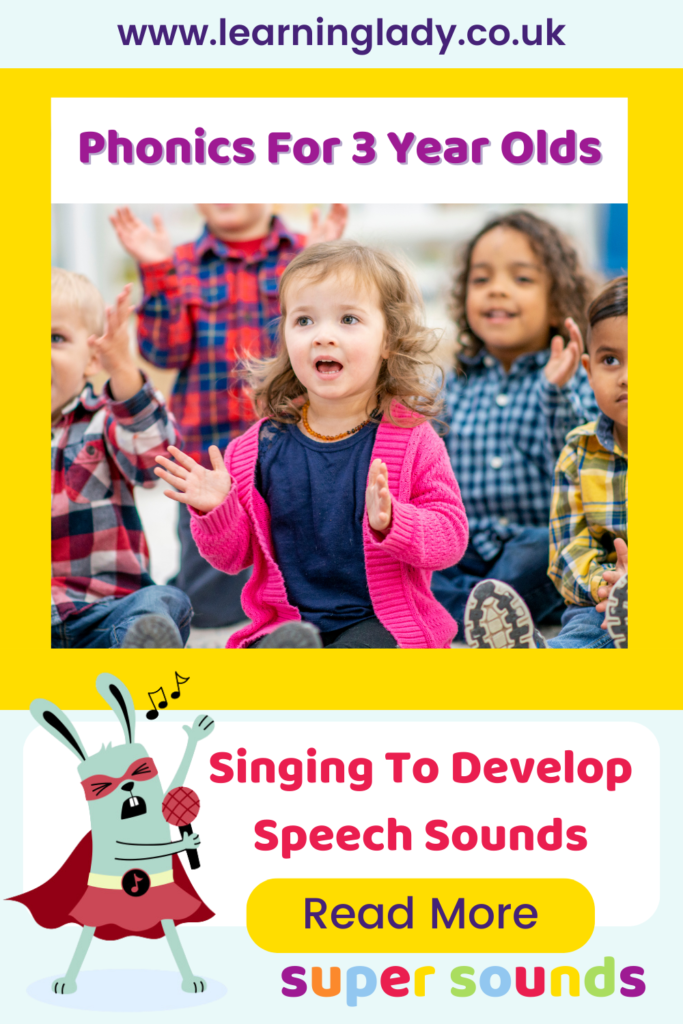
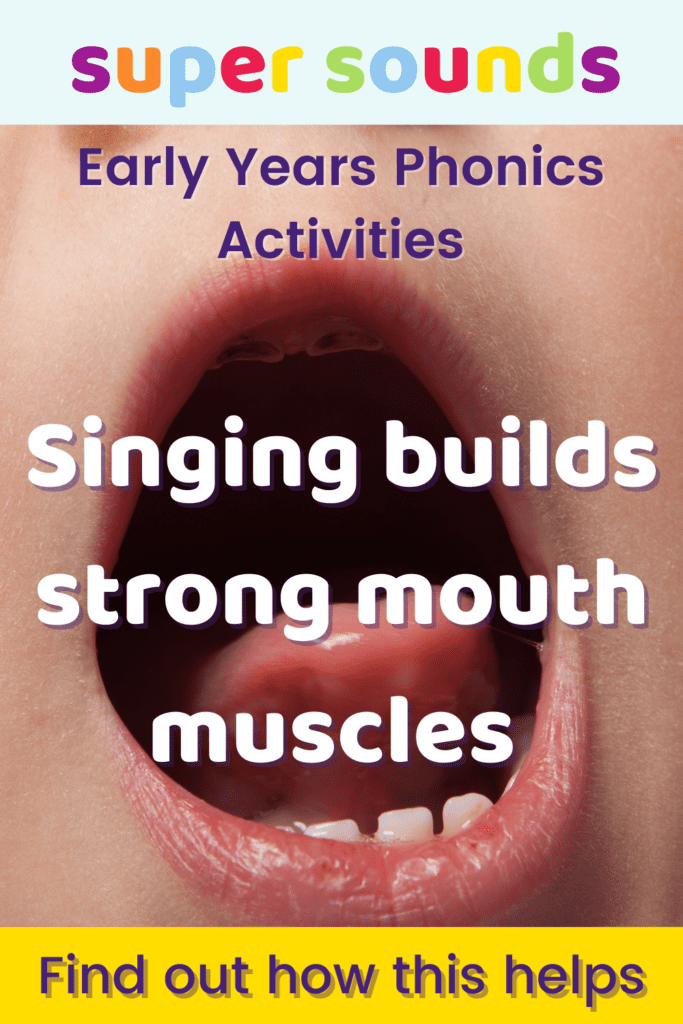
Helping Alfie develop strong mouth muscles
Building better mouth strength and control were essential daily activities for Alfie. He needed clarity of speech to be understood, which would in-turn reduce his frustration with the world.
Alfie’s little mouth muscles weren’t well developed or strong enough, so singing was really important to help him succeed.
How EYFS phonics activities, like singing, build vocabulary
Singing is a brilliant opportunity to introduce new words. Singing songs during daily EYFS Phonics activities means that children like Alfie learn to listen, copy, and repeat new words, until they learn how to say them.
Songs also help 2,3 and 4 year olds to understand that words need to be spoken in the correct order to be understood.
Learning to say, understand and use new words was an epic challenge for Alfie.
It wasn’t only singing that made the difference to his vocabulary development, but it definitely helped!
Singing in the EYFS is all inclusive and it’s free !
For children like Alfie, singing is a way in. They begin by watching and listening, eventually matching sounds and words by joining in.
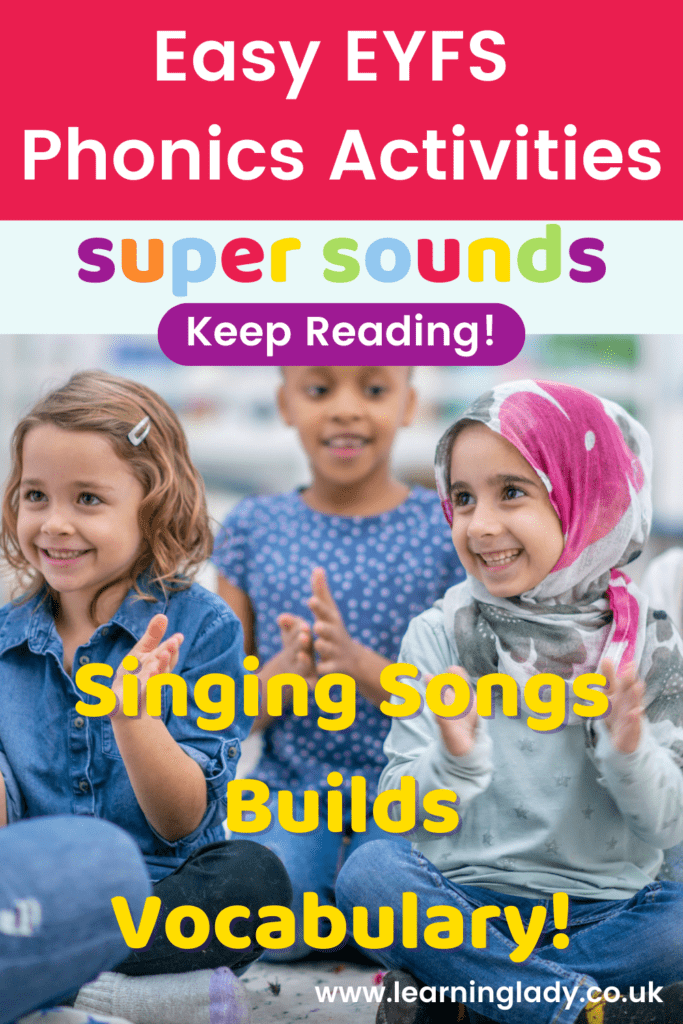
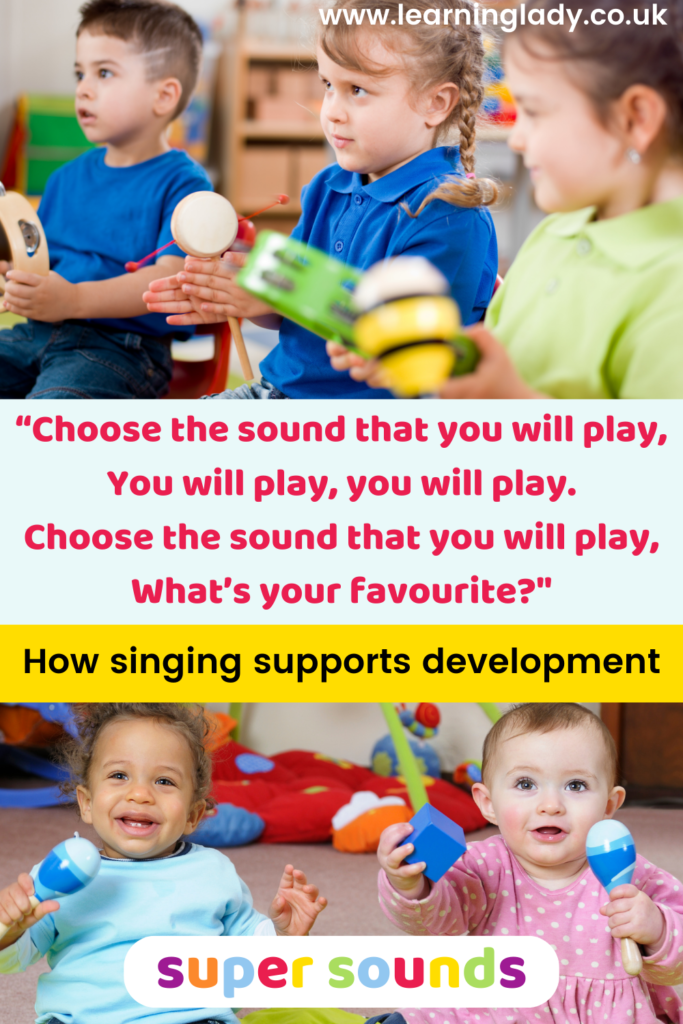
By copying their friends, they eventually sing independently, at first alongside others, eventually on their own. Singing all together is just what they need because the pressure is off.
Preschoolers don’t see singing as learning, even though it’s helping them develop in a lot of different ways. And, there’s no right or wrong answer with singing. Confidence is developing bit by bit every time children like Alfie participate.
One of those early years phonics activities that you can do anywhere!
Like many of our nursery children, Alfie was less keen on carpet time. He liked playing alongside his friends, and exploring the environment best. He was particularly keen on investigating outside.
Singing is one of those perfect early year phonics activities because it doesn’t need to be confined to a carpet time activity, even though it often is.
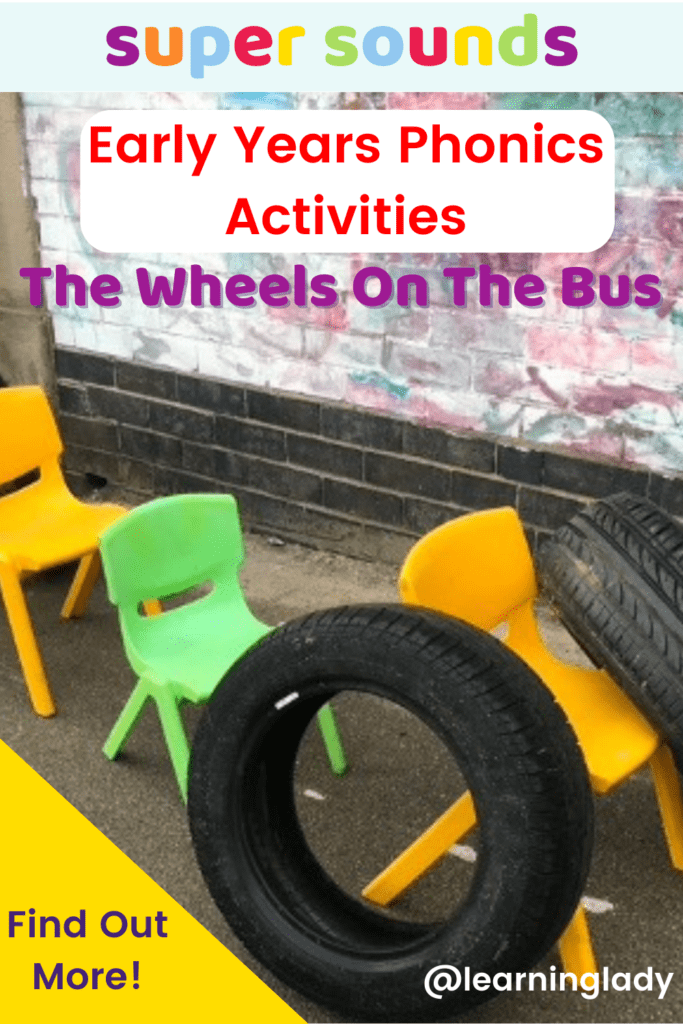
To engage children in singing, we set up situations where we could sing throughout the day.
Alfie’s favourite was the day we played Wheels On The Bus outside. In seconds, we created a ‘bus’ with some chairs and old tyres. The children helped to make some tickets using paper, and we found some toy coins too.
This super speedy outdoor role play was all we needed to sing The Wheels On The Bus, non-stop, for over an hour! Everybody sang along, getting on and off the bus, acting out different characters. Such a great opportunity for developing mouth muscle strength, at the same time as having a morning full of fun outdoors!,
Preschool Phonics Activities | A Singing Progression
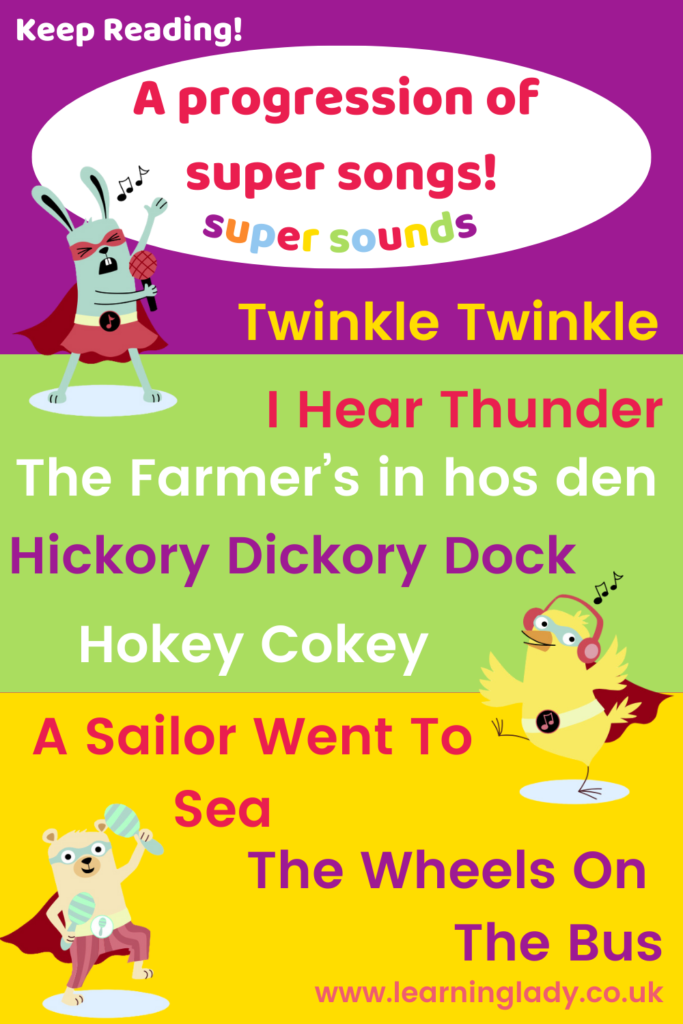
We began to think about our songs as a progression, rather than always letting the children choose. We knew that, for children like Alfie, success would be gained by building his skills, one step at a time. We decided to start by teaching super simple tunes and words, developing in complexity over time.
We started from scratch. writing down the songs we knew, and the ones children loved. We did some research, then organised them in order of challenge for the children. This activity really made us think. It was a brilliant exercise for developing a singing progression matched to our preschool phonics activities.
Add singing to your early years phonics activities today!
It’s so easy to just turn on You Tube or ask the children what they’d like to sing, and we’d definitely fallen into that trap. Mapping out songs, week by week, in order of difficulty, saved heaps of time in the long run, and was so helpful for Alfie and his friends.
The progression we followed is in Super Sounds, the prephonic programme for 2,3 and 4 year olds. It contains a ready made progression of songs that’s baked into the weekly plans.The ultimate time saver!
Phonics activity EYFS: Singing Solution 1
The BBC website A-Z of nursery rhymes and songs was incredibly helpful. It reminded us of classic songs we’d forgotten, as well as some reworkings of traditional tunes, with a modern twist. This Is The Way We Lay The Bricks was a firm favourite with the adults and the children.
Phonics activity EYFS: Singing Solution 2
Alfie loved to waddle like a penguin as we sang the Waddle Like a Penguin Song! This super simple song was perfect for learning the names of some animals and some descriptive words too. The word ‘waddle’ was a new word for all of the children!
Phonics activity EYFS: Singing Solution 3
Because singing is super successful in building prephonic skills, our preschool phonics activities always included a song. Sometimes this was a starter, sometimes this was part of a game.
The ‘Listen to the shopping game’ was a song and game all-in-one! We played it many, many times, with all kinds of sounds, starting with easily identifiable sounds, becoming harder to differentiate over time.
Phonics activity EYFS: Singing Solution 4
This FREE song book includes many of the songs and games we played, week in, week out, adapting how we played as confidence and skills developed.
The songbook includes all the song words and live tune streaming links you’ll need to start playing, and singing, with your children, straightaway!
Singalong with all of the Phonics activity EYFS songs in the songbook
Phonics activity EYFS: Singing Solution 5
Like all preschoolers, Alfie and his friends were intrigued by technology, and once we got our YOTO device, it was something we used every single day. A YOTO player is an audio player that’s perfect for preschool. You can choose from hundreds of different cards to insert and play stories, songs and games that are just right for 2,3 and 4 year olds.
We used our YOTO player in so many different ways; for practising nursery songs, playing Phase 1 Phonics listening games, and listening to lots of engaging preschool stories. What we loved about using the YOTO device was that it developed the children’s independence. The children could choose their favourite songs and join in with them throughout the day. They really felt in charge!
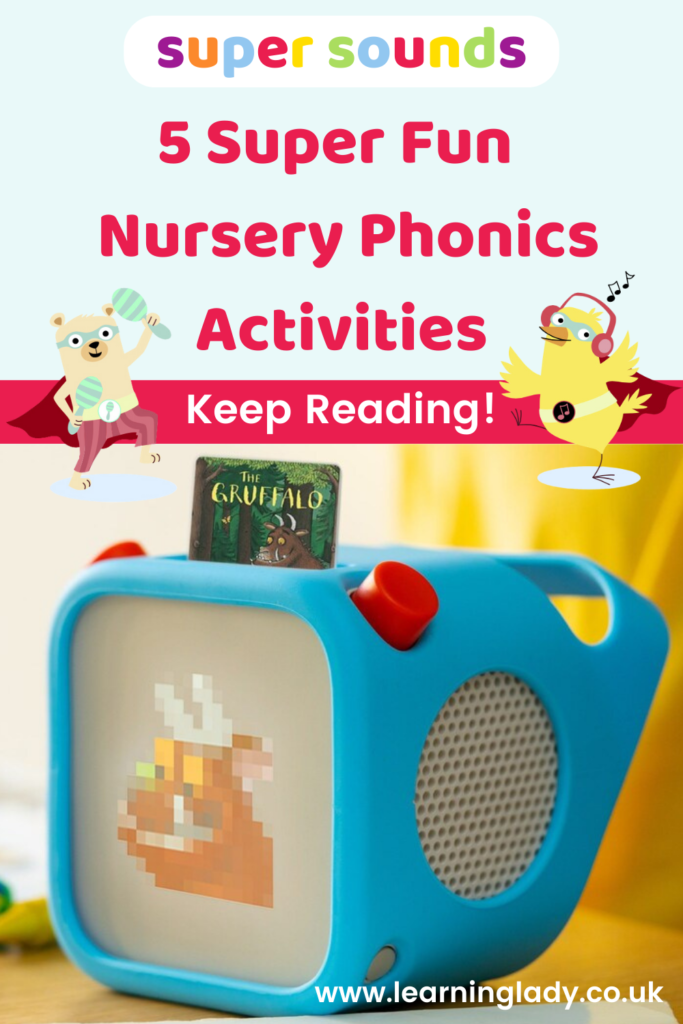
Alfie’s mum told us that he often sang to himself on the bus as they travelled home from nursey. His favourite songs were usually the ones the other children had been singing along with on the YOTO player.
A Happy Ending
During his time in Nursery, Alfie’s speech slowly gained clarity. As he moved into full time school he could be understood, and his bank of words had dramatically increased. His behaviour changed too. Alfie was no long frustrated or reluctant to join in. He felt accepted and was prepared for the next stage of his learning journey. Singing wasn’t the only factor that helped Alfie to succeed, but it did play a significant part.
Even more Phonics activity EYFS Ideas!
If you’re new to preschool phonics activities and want to learn more about this crutial area of prephonic development, then there’s plenty more to discover!
Super Sounds by The Learning Lady
Ready for Ready – Preschool Online Training Course
FREE Recommended Reading books for Preschool Phonics
Firework Sounds | Fast Phase 1 Phonics game
Noisy Alien Game | Fun Phonics phase 1 game
Why are voice sounds so important? FREE training online
What comes before Phonics by Sally Neaum
